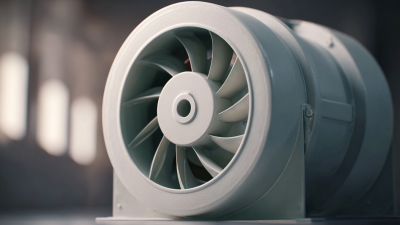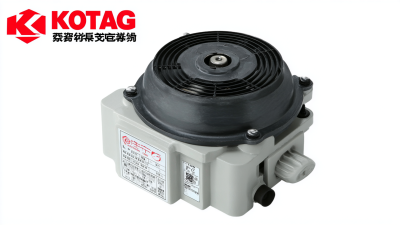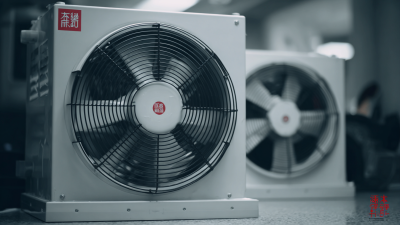




In today’s highly industrialized world, the importance of maintaining optimal air quality and preventing moisture-related damages cannot be overstated. Central to achieving this goal is the use of a Desiccant Filter, a crucial component in various applications ranging from manufacturing to pharmaceuticals. As experts emphasize, “The efficiency of a desiccant filter is not merely about removing moisture; it's about ensuring the longevity and reliability of the entire system,” states Dr. Emily Roberts, a specialist in environmental engineering. This highlights the integral role that desiccant filters play in preserving the integrity of both equipment and products.
Furthermore, understanding the functions and benefits of a Desiccant Filter is essential for industries that rely heavily on controlled environments. These innovative filters not only absorb moisture but also help in preventing issues such as corrosion, mold growth, and equipment failure. With advancements in technology, the effectiveness and design of desiccant filters have evolved, offering enhanced performance that aligns with modern demands. By delving deeper into the mechanisms and applications of these filters, we can better appreciate their significance in various industrial processes.

Desiccant filters play a crucial role in moisture control by removing water vapor and preventing condensation in various applications, such as HVAC systems, compressed air systems, and packaging. These filters utilize desiccants—materials that absorb moisture—to maintain a low humidity environment, ensuring the longevity and efficiency of equipment. By effectively managing moisture levels, desiccant filters help prevent corrosion, mold growth, and other moisture-related damage, making them an essential component in many industrial processes.
When using desiccant filters, it's important to regularly monitor and replace the desiccant material as it becomes saturated with moisture. Tips for prolonging the lifespan of your desiccant filter include keeping the ambient temperature consistent and avoiding exposure to excessive moisture sources. Additionally, using a pre-filter can help collect larger particles and reduce the load on the desiccant, further enhancing its performance.
For optimal results, consider the specific moisture control needs of your application. Choosing the right type of desiccant, whether silica gel, activated alumina, or molecular sieves, can significantly impact the effectiveness of the filter. Regular maintenance and proper usage will ensure that your desiccant filter operates efficiently, providing a reliable solution for moisture control.
Desiccant filters play a crucial role in various industrial applications by removing moisture from air and gases. The efficiency of these filters greatly depends on the type of desiccants used. Commonly employed materials include silica gel, activated alumina, and molecular sieves, each possessing distinct characteristics that cater to specific needs.
For example, silica gel is known for its high adsorption capacity and affordability, making it a popular choice in many applications. According to a report by the Global Desiccant Market, silica gel accounts for approximately 40% of the market share due to its widespread use in packaging and moisture control.
Activated alumina, with its high surface area and ability to regenerate, is another frequently used desiccant, particularly in air drying and as a catalyst support. Its ability to adsorb both water vapor and organic compounds makes it effective in applications requiring stricter moisture control, such as in pharmaceutical manufacturing.
In contrast, molecular sieves provide superior adsorption capabilities in regenerating environments, effectively trapping smaller molecules and making them ideal for complex gas processing applications. The choice of desiccant is key to optimizing filter system performance, impacting factors such as efficiency, lifetime, and operating costs, underscoring the importance of selecting the appropriate material for specific applications.
 Desiccant filters play a crucial role in various industrial applications by controlling humidity and moisture levels. These filters utilize desiccants—substances that absorb water vapor—to maintain optimal conditions for equipment and products. One of the primary benefits of using desiccant filters is their ability to prevent corrosion and damage caused by excess moisture. In industries such as pharmaceuticals, food processing, and electronics, maintaining low humidity levels is essential for preserving product integrity and enhancing shelf life.
Desiccant filters play a crucial role in various industrial applications by controlling humidity and moisture levels. These filters utilize desiccants—substances that absorb water vapor—to maintain optimal conditions for equipment and products. One of the primary benefits of using desiccant filters is their ability to prevent corrosion and damage caused by excess moisture. In industries such as pharmaceuticals, food processing, and electronics, maintaining low humidity levels is essential for preserving product integrity and enhancing shelf life.
Tips for utilizing desiccant filters effectively include regularly monitoring humidity levels and replacing desiccants as needed. Additionally, ensure that the filter is appropriately sized for your specific application to maximize moisture absorption. Another advantage of desiccant filters is their energy efficiency; they reduce the need for more extensive dehumidification systems, ultimately lowering overall operational costs.
Implementing desiccant filters enhances not only product quality but also contributes to the longevity of machinery. By investing in these filters, businesses can experience reduced maintenance costs and improved reliability of their production processes. Proper installation and maintenance, alongside regular assessments, can lead to significant long-term benefits in various industrial settings.
Desiccant filters play a critical role in maintaining a dry environment by absorbing moisture from the air. To keep these filters functioning efficiently, regular maintenance is essential. Routine checks and timely replacements can significantly enhance their performance. For instance, research indicates that by keeping desiccant filters clean and replenished, users can improve moisture removal efficiency by up to 20%. This is particularly crucial in homes where dampness can lead to mold growth and other moisture-related issues.
Another maintenance tip is to ensure proper airflow around the desiccant filter. Blockages can hinder performance, leading to increased energy costs and reduced effectiveness. According to industry studies, dirty or blocked filters can decrease appliance efficiency by as much as 15%, leading to higher running costs and potential appliance damage over time. Conducting regular inspections and implementing a proactive maintenance schedule will not only extend the life of desiccant filters but also enhance overall indoor air quality, making your living space healthier and more comfortable.
Desiccant filters are gaining traction in various industries due to their unique ability to remove moisture from gases and liquids, distinguishing them from traditional filtration methods. Unlike conventional filters that primarily target particulate matter or specific contaminants, desiccant filters utilize hygroscopic materials to absorb water vapor effectively. According to a report by the Global Filtration Market, the desiccant filter segment is projected to grow at a CAGR of 5.2% through 2026, reflecting their increasing adoption in industries such as food and beverage, pharmaceuticals, and electronics where moisture control is critical.
When comparing desiccant filters to other filtration methods, such as mechanical or electrostatic filters, the advantages become evident. Mechanical filters may efficiently remove larger particles but often struggle with gas-phase moisture removal. Conversely, electrostatic filters are adept at capturing dust and allergens but do not address humidity issues. A study from the Institute of Clean Air concludes that moisture can lead to significant product spoilage, emphasizing the necessity of integrating desiccant filters alongside traditional methods for comprehensive contamination control. This synergistic approach not only enhances operational efficiency but also prolongs the lifespan of equipment and products across various sectors.









